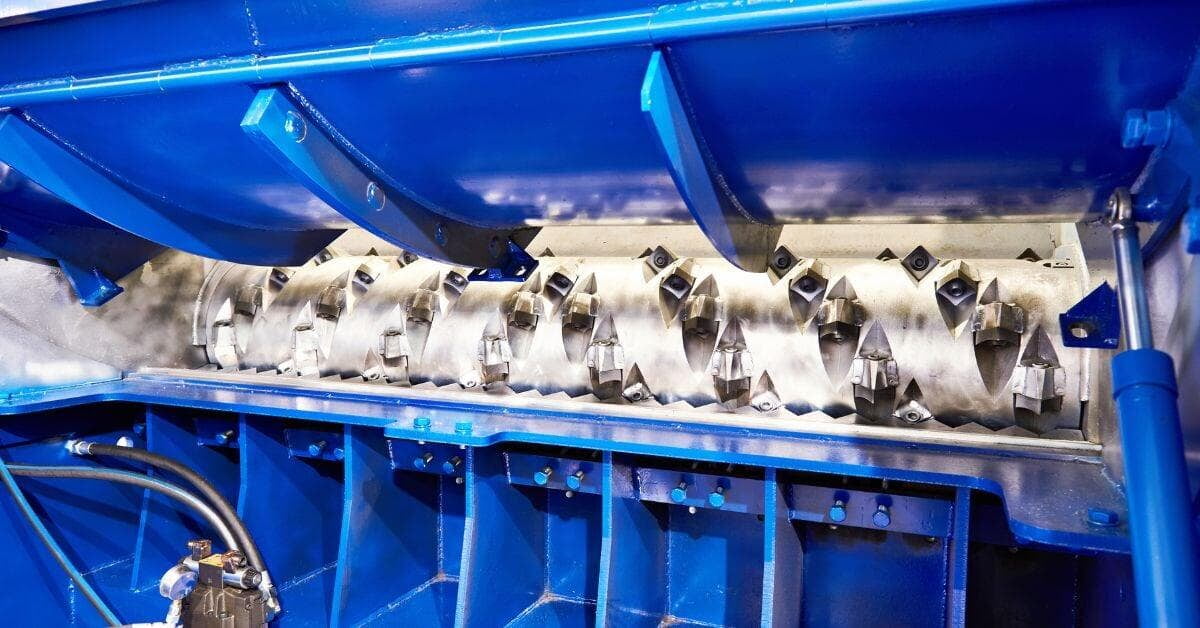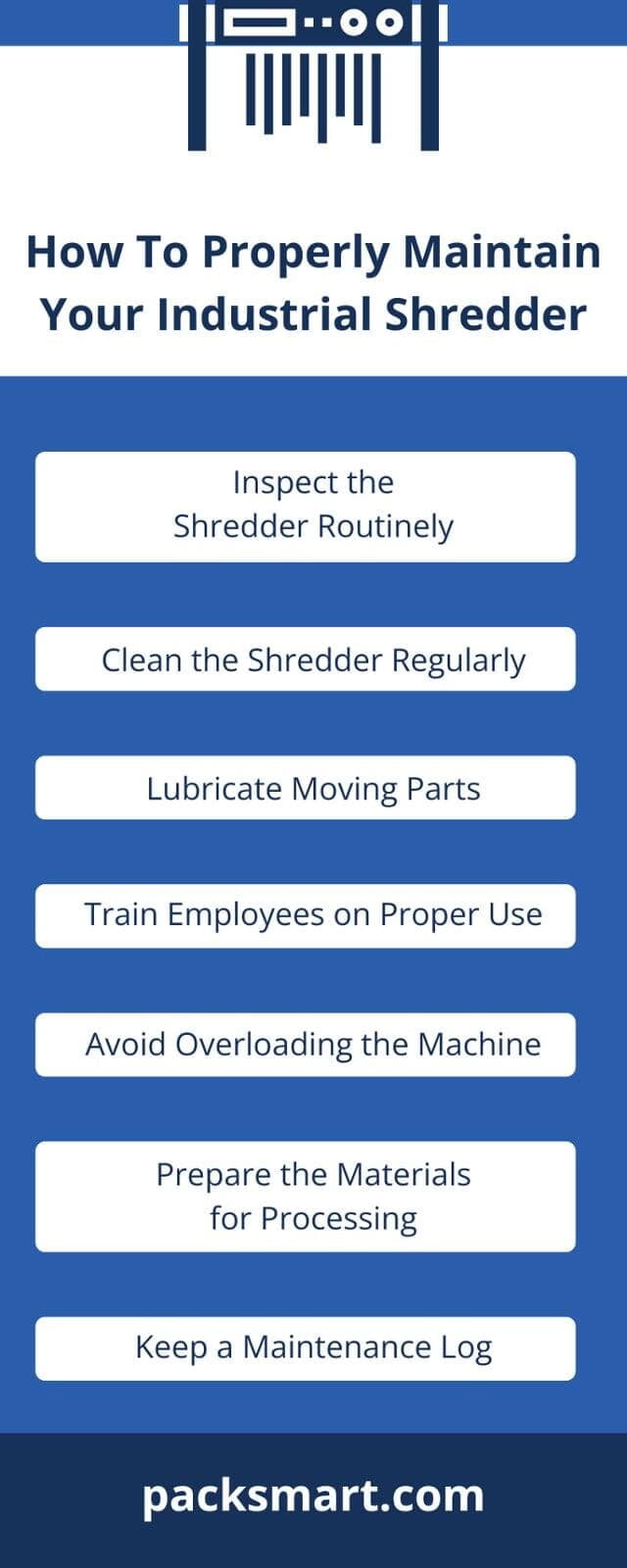
Industrial shredders help organizations manage waste and recycle materials by breaking down paper, plastic, metal, and other substances. These robust devices efficiently process large volumes of material, making them indispensable for waste management in various industries. Explore how to properly maintain your industrial shredder to extend its lifespan, enhance its performance, and prevent costly breakdowns.
Inspect the Shredder Routinely
Regular inspections are vital for catching potential issues, allowing for timely maintenance that can prevent potential breakdowns and reduce the risk of safety hazards. Check for signs of wear and tear, such as damaged blades or belts, which can compromise the machine’s performance and harm productivity. Make it a routine to perform these inspections at least once a week to keep your shredder in top condition.
Additionally, during inspections, look out for any unusual noises or vibrations that could indicate internal issues. If you notice anything out of the ordinary, address it immediately to prevent further damage. Depending on the problem, you may need to replace worn parts, lubricate components, or schedule professional repair services.
Clean the Shredder Regularly
Keeping your industrial shredder clean is essential for proper maintenance and safety. Debris buildup can cause jams and reduce the efficiency of the machine, leading to potential downtime. After each use, carefully remove any remaining material from the shredder’s cutting chamber and surrounding areas to prevent accumulation.
For a more thorough cleaning, schedule a monthly deep clean; this involves dismantling certain parts of the shredder, if necessary, and cleaning them individually. Always follow the manufacturer’s guidelines to ensure you don’t damage any components during the cleaning process. The guidelines will provide notes on safe cleaning agents to use, the recommended frequency of cleaning tasks, and detailed instructions on how to disassemble and reassemble the shredder components safely.
Pro Tip: Keep the Surrounding Area Clean
Maintaining a clean workspace around the shredder prevents accidents and keeps workflows on pace. Clear any debris off the floor and nearby surfaces to avoid tripping hazards and reduce the risk of foreign objects interfering with the shredder. Regularly sweep and organize the area to ensure there is sufficient space for safe operation and maintenance activities.
Lubricate Moving Parts
Lubricating the shredder’s blades, bearings, and other moving parts ensures smooth operation and prevents overheating. Make sure you use high-quality lubricants recommended by the manufacturer and apply them according to the specified intervals. Regular lubrication not only enhances shredder performance but also prevents costly breakdowns.
Using the wrong lubricant or neglecting this task can lead to increased friction and wear, reducing the machine’s lifespan. If you hear squeaking or grinding noises during operation or see dry or dusty moving parts, you may need to lubricate those components immediately to prevent damage.
Train Employees on Proper Use
An experienced supervisor or designated safety officer who is knowledgeable about the machine’s operation and safety protocols should train employees on proper shredder use to prevent misuse and accidents. Provide comprehensive training sessions that cover operating procedures, troubleshooting common issues, and safety measures. This will help employees understand how to use the shredder correctly and what to do in case of a problem.
Your facility should regularly update its training program to include any new information or changes in safety protocols. Encourage employees to ask questions and report any issues they encounter while using the shredder.
Avoid Overloading the Machine
Shredder overloading occurs when someone feeds more material into the machine than it is designed to handle at one time. This excessive load can cause the shredder to jam, overheat, or experience mechanical damage. Overloaded shredders may also experience increased wear and tear, leading to more frequent maintenance and a reduced operational lifespan.
To prevent overloading, always follow the manufacturer’s guidelines regarding the machine’s capacity and specifications. Instead of forcing large quantities of material into the shredder, feed it through in smaller, more manageable batches. Unusual noises or a slowdown in processing speed may indicate that the shredder is overloaded. If this is the case, immediately turn off the machine, carefully remove the excess material, restart the machine, and feed in smaller batches.
Prepare the Materials for Processing
Preparing the materials before placing them inside the shredder can significantly improve the machine’s efficiency and longevity. Different types of shredders have specific preparation requirements based on their design and capabilities. For example, some devices may require operators to sort materials by size or type to avoid damage.
Always follow the manufacturer’s instructions to prepare materials for processing. Industrial paper shredder machines are strong enough to cut through thick stacks of paper, as well as paper clips, staples, and sometimes plastic cards and other materials. Organize the materials into manageable batches to maintain a consistent processing speed.
Understanding Different Types of Shredders
Common types of industrial shredders include strip-cut and cross-cut, each offering different levels of security and shredding capacities. Strip-cut shredders are known for their simplicity and high shredding speed, making them ideal for environments where volume processing is critical. Cross-cut shredders, on the other hand, offer enhanced security by producing smaller, confetti-like pieces, which is advantageous for disposing of sensitive documents.
To find a suitable machine for your operations, evaluate the type and volume of materials you need to process. Consulting suppliers and reviewing product specifications can help you make an informed decision.
Keep a Maintenance Log
A maintenance log is a detailed record that tracks all the maintenance activities performed on an industrial shredder. It serves as a comprehensive history, documenting routine inspections, repairs, and parts replacements. This log assists in identifying patterns of wear and tear, enabling predictive maintenance to prevent unexpected breakdowns.
Keep a thorough maintenance log to help with early detection of issues and troubleshooting. For an industrial shredder, the log should include the dates of inspections, issues observed, actions taken, parts replaced, and any professional services rendered. This log serves as a valuable reference for future maintenance schedules and helps technicians understand the machine’s history.
Optimizing your industrial shredder’s performance hinges on a consistent routine of inspections, targeted cleaning, lubrication, and comprehensive employee training. Avoiding overloads and preparing materials appropriately can significantly extend the machine’s lifespan. Finally, a detailed maintenance log serves as an invaluable tool for predicting maintenance and for troubleshooting.

